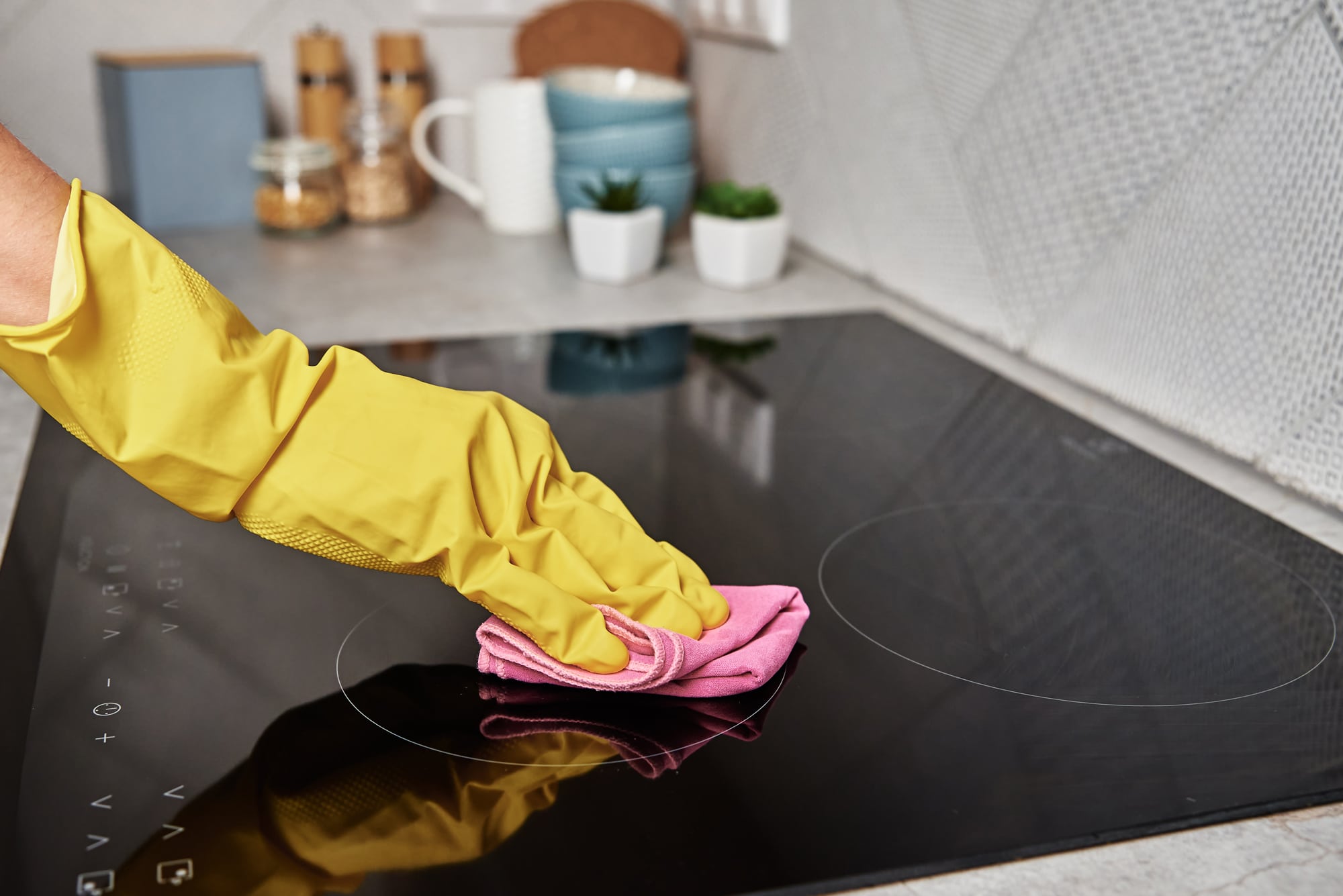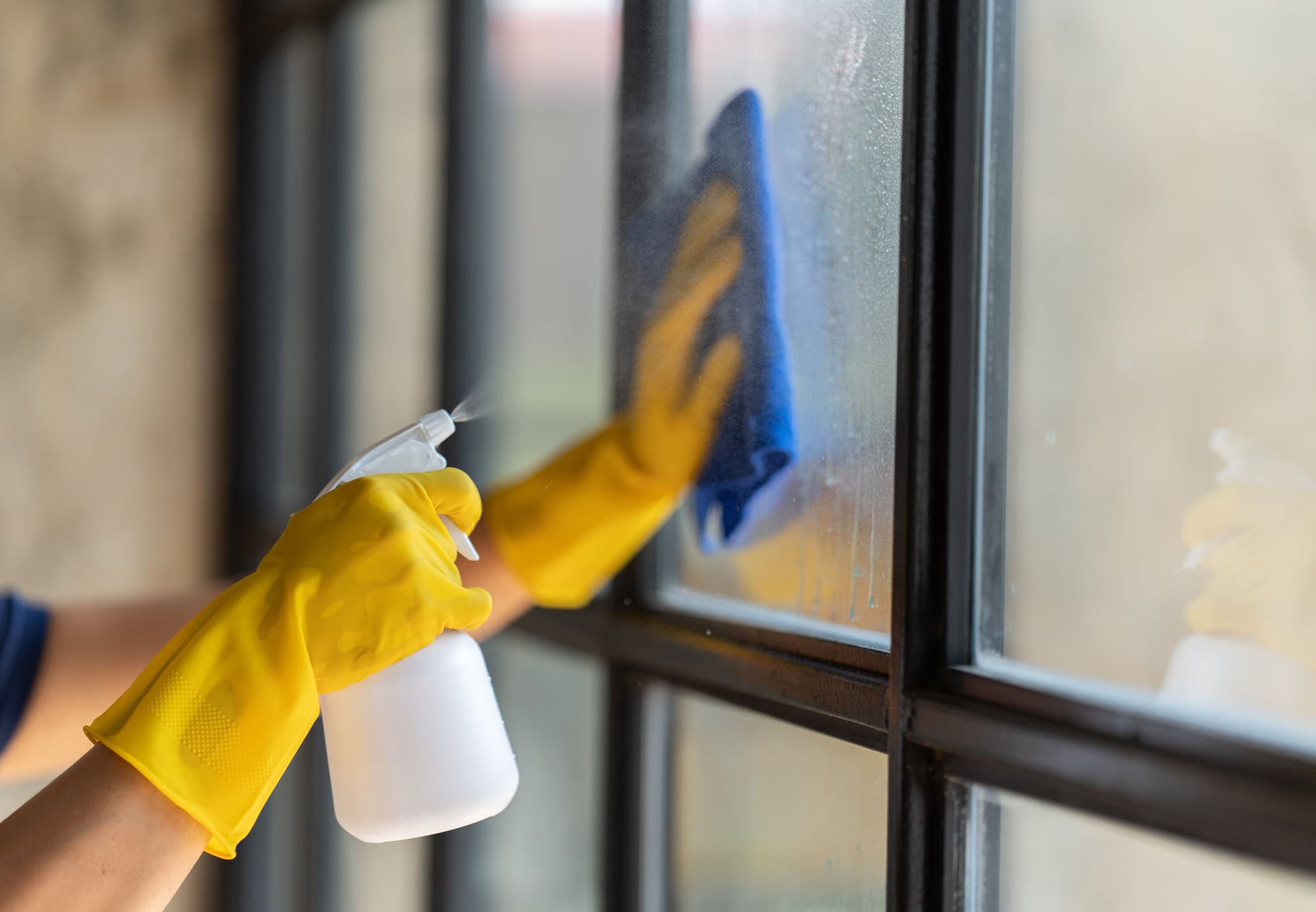Imagine you’ve just finished baking a delicious lasagna, but now your oven’s interior looks like a battlefield of melted cheese and dried sauce. You might wonder if using the self-cleaning feature is the best way to tackle this mess. While it offers a hands-off solution, you need to evaluate if it truly eliminates all grime and how it fits into your overall cleaning routine. Let’s explore these aspects to help you decide.
Understanding Self-Cleaning Ovens
When you think about convenience in kitchen appliances, self-cleaning ovens definitely stand out.
These innovative machines save you precious time and effort by taking care of the mess for you. One of the primary self-cleaning benefits is the high-heat cleaning method that turns stubborn food residue into ash, making it easy to wipe away.

This process not only simplifies your cleaning routine but also improves oven safety by reducing the chances of fire hazards from built-up grease and grime. Plus, most self-cleaning ovens come with safety features like locked doors during cleaning, ensuring peace of mind.
Embracing a self-cleaning oven isn’t just a time-saver; it’s a smart investment in maintaining a cleaner, safer kitchen environment.
How Self-Cleaning Technology Works
When you activate your self-cleaning oven, the heating element kicks in, raising the temperature to about 900°F.
This process, known as pyrolytic cleaning, incinerates any leftover food and grease into ash, which you can easily wipe away.
Some models also use steam cleaning, which combines heat and moisture to loosen baked-on residue, making it simpler for you to maintain a clean oven.
Heating Element Activation
Although self-cleaning ovens offer a convenient way to keep your appliance spotless, it’s the heating element activation that truly makes this technology effective. When you choose the self-cleaning option, the heating elements are strategically placed to reach high temperatures, usually around 900°F. This intense heat breaks down food residues into ash, making cleanup simple.

Moreover, proper heating element placement minimizes hot spots, ensuring even heating throughout the oven. This design not only enhances cleaning efficiency but can also extend the heating element lifespan.
With less wear and tear during regular cooking, these elements can last longer with proper care. Embracing self-cleaning technology means you’re investing in both convenience and the durability of your appliance.
Pyrolytic vs. Steam Cleaning
While you’re considering self-cleaning options for your oven, it’s essential to understand the two primary methods: pyrolytic and steam cleaning.
Pyrolytic cleaning uses high temperatures, around 900°F, to incinerate food residues into ash, which you can easily wipe away afterward. This method’s effectiveness is impressive, but it requires significant energy and time.
On the other hand, steam cleaning involves adding water to the oven, which creates steam to soften grime. This method typically takes less time and energy, making it more eco-friendly. However, it mightn’t tackle tough stains as efficiently as pyrolytic cleaning.
Deciding between the two depends on your cleaning preferences and how dirty your oven tends to get. Choose wisely for a cleaner oven!
Advantages of Self-Cleaning Ovens
One of the standout benefits of self-cleaning ovens is how they simplify the often tedious task of maintaining a clean kitchen.
With just the push of a button, you can enjoy impressive cleaning efficiency, eliminating the need for harsh chemicals and extensive scrubbing. The self-cleaning feature saves you time, allowing you to focus on cooking and enjoying meals rather than dreading cleanup.
User convenience is further enhanced by the oven’s ability to reach high temperatures that burn off food residues, turning them into ash that’s easy to wipe away.
Disadvantages of Self-Cleaning Ovens
While self-cleaning ovens can make your life easier, they’re not without drawbacks.
You might notice high energy consumption during the cleaning cycle, which can rack up your utility bills.
Plus, the process can generate smoke and may not always provide a thorough clean, leaving you to tackle stubborn spots manually.
High Energy Consumption
Although self-cleaning ovens offer the convenience of automatic cleaning, they come with a notable drawback: high energy consumption.
When you activate the self-cleaning cycle, your oven heats to extreme temperatures, greatly increasing your energy costs. This spike in energy demand not only impacts your wallet but also contributes to a larger environmental impact.
By using more electricity, you’re increasing your carbon footprint, which can be a concern for those trying to live sustainably. If you’re conscious about energy use, you might want to think about alternative cleaning methods that are less demanding on energy resources.
Potential Smoke Emissions
When you activate the self-cleaning cycle on your oven, you might encounter another significant concern: potential smoke emissions.
As your oven reaches extremely high temperatures, it can produce smoke that triggers smoke detection systems in your home. This isn’t just an inconvenience; it can impact your air quality, particularly if you have respiratory issues or allergies.
You might notice that even with proper ventilation, the smoke can linger, causing irritation.
To minimize this, consider running the self-cleaning cycle during a time when you can keep windows open or use fans to help dissipate the smoke.
Always monitor your smoke detectors to verify they’re functioning properly and ready to alert you if necessary.
Limited Cleaning Effectiveness
Many homeowners assume that self-cleaning ovens provide a thorough clean, but that’s often not the case. While the self-cleaning cycle helps remove some grease and grime, it often has limited cleaning effectiveness.
Stubborn stains, like burnt-on food or heavy grease, can resist the intense heat, leaving you with less-than-satisfactory results. You might find that even after a self-cleaning cycle, some areas still appear dirty.
Additionally, if your oven hasn’t been maintained regularly, the self-cleaning feature may struggle to tackle those more challenging messes. In such cases, you’ll still need to roll up your sleeves and manually scrub to achieve the sparkling clean you desire.
Ultimately, self-cleaning isn’t a foolproof solution—be prepared for a bit of extra effort.
Effectiveness in Removing Grease and Grime
While self-cleaning ovens promise a hassle-free approach to maintaining your kitchen appliance, their effectiveness in removing tough grease and grime can vary.
Many users find that these cycles do a decent job of tackling light grime buildup but struggle with heavier messes. If you’ve baked on grease that’s become stubborn over time, you may need to perform additional cleaning steps.
Relying solely on the self-cleaning feature mightn’t yield the best results, especially for areas with significant grease accumulation. Consider spot-cleaning with a conventional oven cleaner before starting the self-cleaning cycle to enhance grease removal.
Safety Considerations During Self-Cleaning
After ensuring your oven is clean, it’s crucial to contemplate safety measures during the self-cleaning process.
First, always follow the manufacturer’s instructions for your specific oven model. Be sure to enable proper ventilation by opening windows or using exhaust fans to help clear out any odors or smoke.
It’s crucial to keep the area around the oven clear of flammable materials like paper towels or dishcloths. Additionally, if you have young children, make sure to supervise them closely or keep them at a safe distance while the oven self-cleans.
The high temperatures can pose risks, so taking these safety precautions will protect both you and your family during the process.
Stay safe and enjoy your freshly cleaned oven!
Maintenance Tips for Self-Cleaning Ovens
Keeping your self-cleaning oven in top shape requires a few simple maintenance tips.
Regularly inspect the oven’s door gasket for wear and tear. A damaged gasket can hinder the self-cleaning benefits, leading to inefficient cleaning cycles.
Try to wipe down the interior surfaces between self-cleaning cycles, especially after spills, to reduce build-up. Aim for self-cleaning once every few months, depending on how often you cook—this maintenance frequency helps maintain efficiency while preventing tough, baked-on grime.
Remember to always follow the manufacturer’s guidelines to guarantee proper care.
Finally, keep the exterior clean and check that vents are free from obstructions to support adequate airflow.
Alternative Cleaning Methods
If you’re looking for alternatives to the self-cleaning cycle, several effective cleaning methods can keep your oven spotless without the high heat.
You can use natural cleaners like a vinegar solution mixed with baking soda and dish soap for a powerful yet eco-friendly approach. Apply a paste of baking soda and water, let it sit, then scrub with brushes to lift tough stains.
For tougher grime, consider commercial products designed for ovens, but be mindful of their ingredients. Additionally, using oven liners can catch spills, making cleanup easier and extending the time between deep cleans.
Explore these options to find a method that fits your cleaning routine while maintaining a fresh and safe cooking environment.
Making the Right Choice for Your Kitchen
When choosing the right oven house cleaners cambridge for your kitchen, it’s important to take into account your cooking habits and cleaning preferences.
Consider how often you cook and the types of dishes you prepare. If you frequently bake and roast, a self-cleaning oven might suit your needs well, offering convenience and ensuring your oven looks great over time.
Think about kitchen aesthetics too—select an oven that complements your décor while maintaining appliance longevity. Stainless steel finishes not only add a modern touch but also resist stains.
Evaluate the features and materials that enhance ease of cleaning and durability, ensuring your investment pays off.
Conclusion
Ultimately, self-cleaning ovens can make your life a lot easier by reducing the time and effort you spend on cleaning. However, they aren’t a one-stop solution for every mess. So, is relying solely on self-cleaning technology enough to keep your kitchen spotless? By combining this convenient feature with occasional manual efforts, you can maintain a gleaming oven while enjoying the benefits of automated cleanliness. Remember, a little extra care goes a long way in kitchen maintenance!